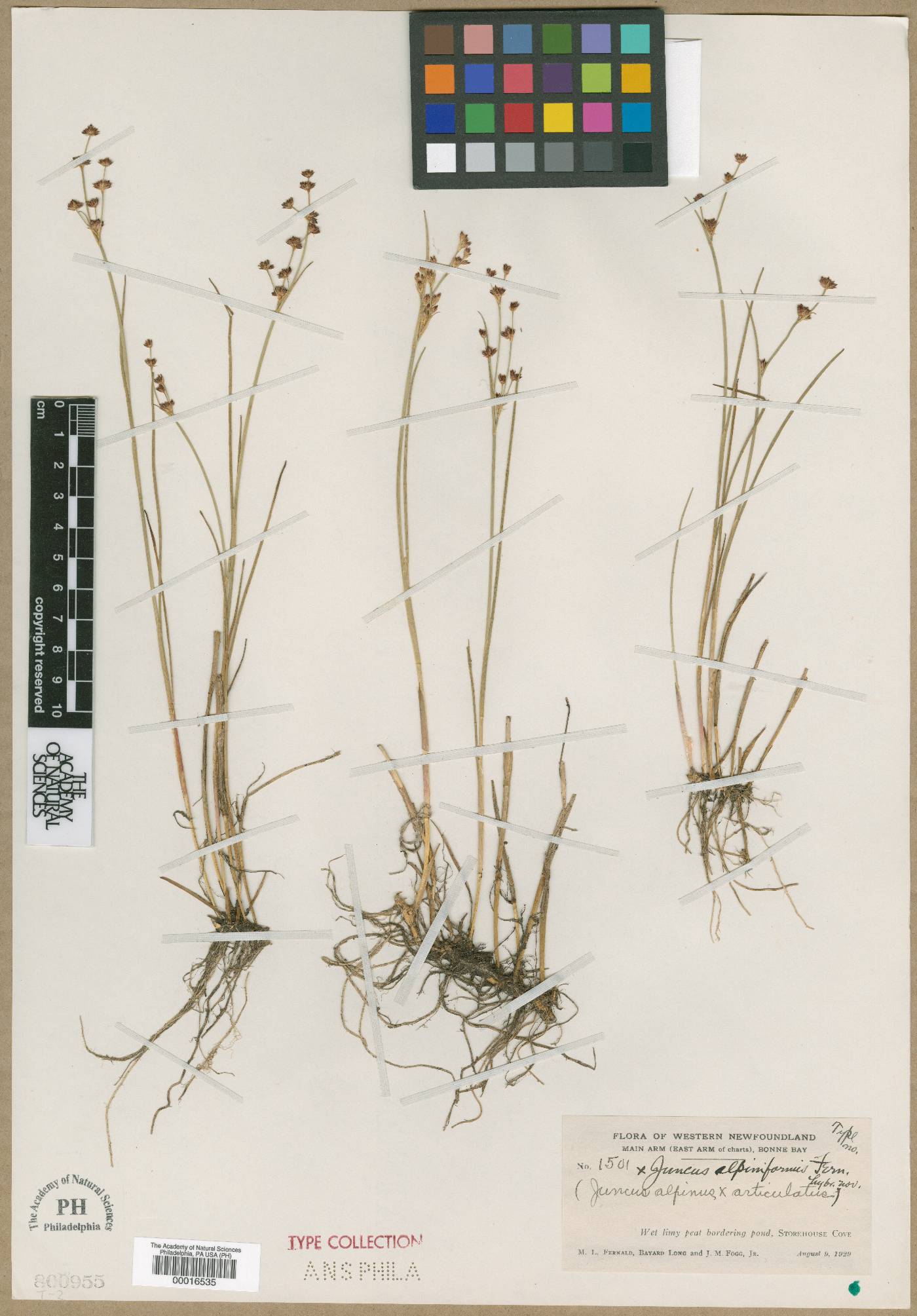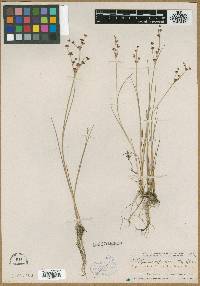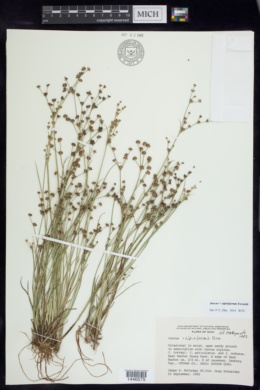
|
|
|
|
Family: Juncaceae
|
Perennial grasslike forb 5 - 60 cm tall Leaves: none to two basal and one to three (or more) alternate on stem, green to straw-colored, linear, grasslike, round in cross section, and with distinct crosswise partitions inside (septate). The leaves also have a papery, basal, 0.5 - 1 mm long, round-tipped, ear-like appendage (auricle) at the top of the leaf sheath. Inflorescence: a terminal, elongate (3 - 10 cm long), narrow, erect to ascending-branched structure with branches ending in three to forty, inversely pyramidal, 2 - 8 mm diameter flower clusters. Each flower cluster is a compact head of two to ten, tiny, radially symmetric flowers. Stamens: six, with filaments and anthers about same length or anthers shorter (up to half the length of the filaments). Pistil: with one superior ovary, and three stigmas. Fruit: somewhat three-chambered, 2 - 4 mm tall (equal or taller than tepals), ellipsoid to inversely egg-shaped, tapering pointed-tipped capsules which open down the sides. Stems: more or less erect, smooth, round in cross section, and arising from rhizomes lacking swollen nodes. Tepals: six in two whorls of three, greenish to straw-colored or darker brown, 1.6 - 3 mm long, somewhat lance-shaped with long-tapering pointed tips. Sometimes the three inner tepals are longer than the three outer tepals. Similar species: Juncus x alpiniformis is similar to its parent species, J. articulatus and J. alpinoarticulatus. It is most similar to J. articulatus except that species has very open spreading inflorescence branches. The other parent, J. alpinoarticulatus, differs by having the inner three tepals shorter and more blunt or rounded than the outer three tepals, and the capsules are more abruptly pointed at the tips. Flowering: June to August Habitat and ecology: Very rare, only found a few times in the Chicago Region in wet sandy areas such as alkaline sedge meadows, or even wet, sandy ditches. Occurence in the Chicago region: native Etymology: Juncus is the classical name for Rush. Alpiniformis refers to the plant having the form of J. alpinus (now called J. alpinoarticulatus), and alpinus meaning alpine. Author: The Field Museum |





